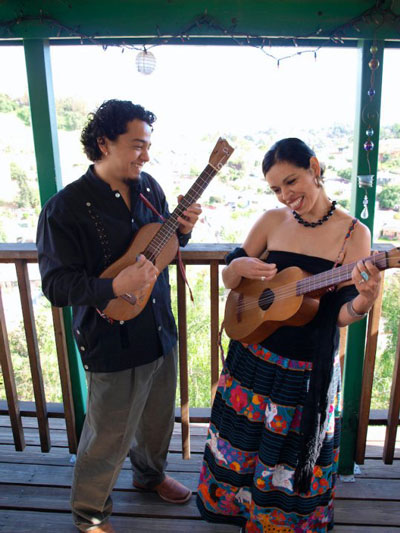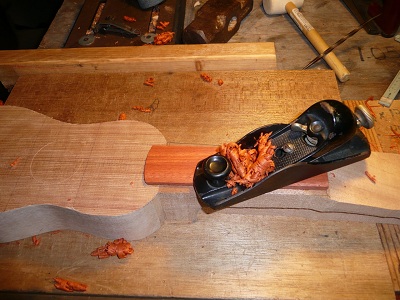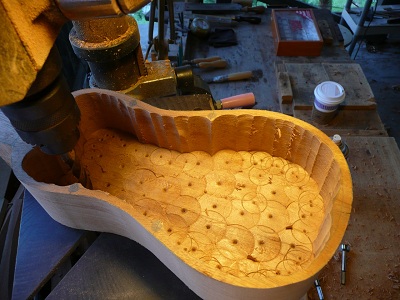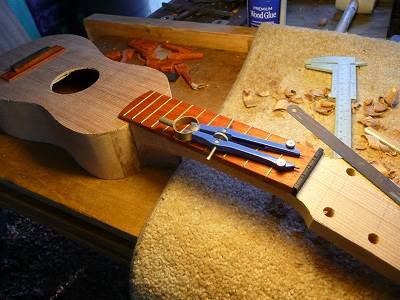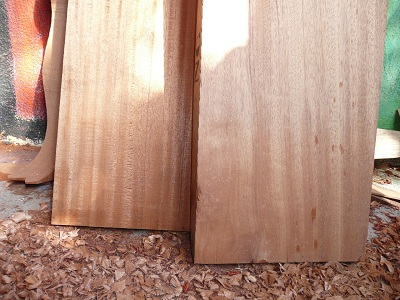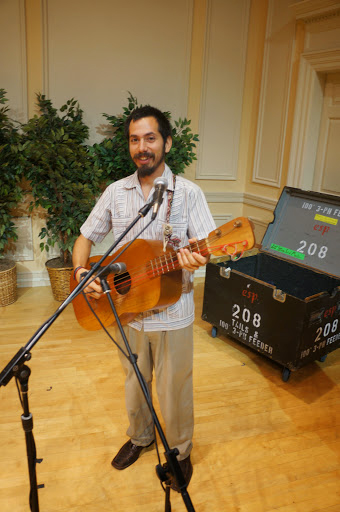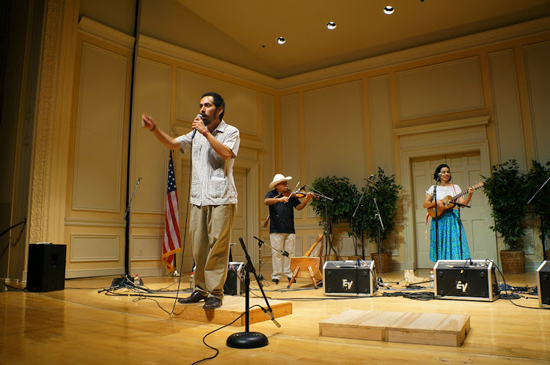César and Rebecca are standing with their jaranas at the fandango at East Side Cafe. Photo credit: IG @chicawithbees
César Castro (Jarochelo)
Mexican son jarocho
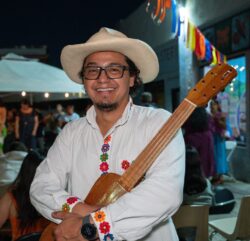
César Castro (Jarochelo) is from Veracruz, México, and has lived in Los Angeles since 2005. César was first taught at the age of 13 when he enrolled in an afterschool jarana class at his middle school. He studied with master harpist Andrés Alfonso Vergara, who contributed to popularizing son jarocho in Mexico from the 1930s–1950s.
Later, César attended a workshop organized by members of Mono Blanco—the most influential son jarocho artists of the 1990s–with whom Cesar performed and toured for eleven years. They introduced him to the fandango. Experiencing the fandango led César to understand the community aspect of son jarocho. César became part of the new generation of youth participating in fandangos in Veracruz during the 1990s. In 2001, began working with Chicanos in Los Angeles through a binational Exchange. Cesar has over 20 years of experience as a multi-instrumentalist, singer, dancer, and an accomplished laudero (luthier), who constructs instruments of the son jarocho tradition.
Son jarocho is a musical tradition originating in the rural communities of Veracruz, Mexico. At its core is a celebration called el fandango, an all-night event centered around a tarima, or wooden platform, on which dancers stomp out rhythms while musicians play small guitars called jaranas and sing improvised verses. The fandango encourages participation of everyone: young, old, experienced, and novice. The interaction between dancer, singer, and musician generates a spirit of la convivencia, or being together and engaged. Using the fandango concept, musicians and community workers in Veracruz have taken son jarocho across the border into Chicano communities in Los Angeles and beyond.
Apprenticeship Program
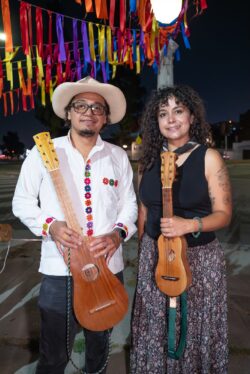
2024
The apprenticeship will focus on technique and répertoire of son jarocho music from Veracruz, Mexico. This includes musicality andadornment, as well as confidence and leadership in performance. With this knowledge, the apprentice will be able to accompany a son while being stronger on the jarana.
2015
As a current master artist in ACTA’s Apprenticeship Program, Cesar will work with apprentice Luis Sarmiento, training him in the art of lauderia (instrument making), focusing on constructing a jarana.
2011
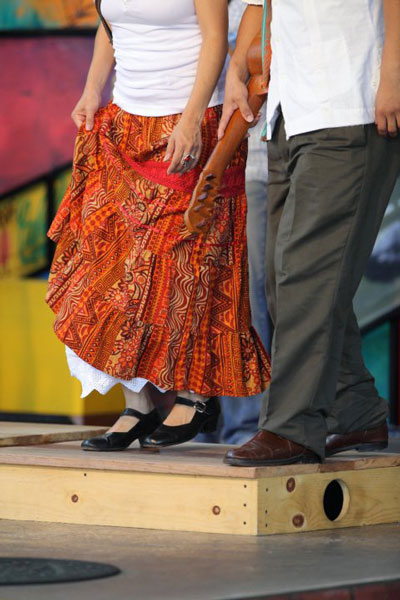
Cesar participated in ACTA’s Apprenticeship Program in 2011 with apprentice Xochi Flores, focusing on increasing Xochi’s skills in zapateado, son jarocho’s dance element, and playing the jarana.
The following video features Cesar Castro (left) and Quetzal Flores playing son jarocho at Occidental College in February 2012.

